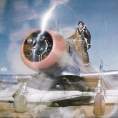Cannot Fly 5 Hours With Manual Throttle?
-
Members Online
- redrider54
- Fly Boomer
- wuda
- MatthiasArnold
- kortopates
- N201MKTurbo
- TravelingIA98
- IvanP
- 47U
- Schllc
- Greg Ellis
- SARNorm
- caractacuspdoom
- richardbrochu27
- M20C Driver
- Jim F
- varlajo
- Robert Ripley
- Ospeed
- WilliamR
- TangoTango
- Thedude
- Sabremech
- hammdo
- cruiserflyer
- peterl
- acekng1
- dkkim73
- Danb
- McMooney
- Hank
- rklems
- ta2too
- Guillaume
- Larry
- Gilt
- Ragsf15e


Recommended Posts